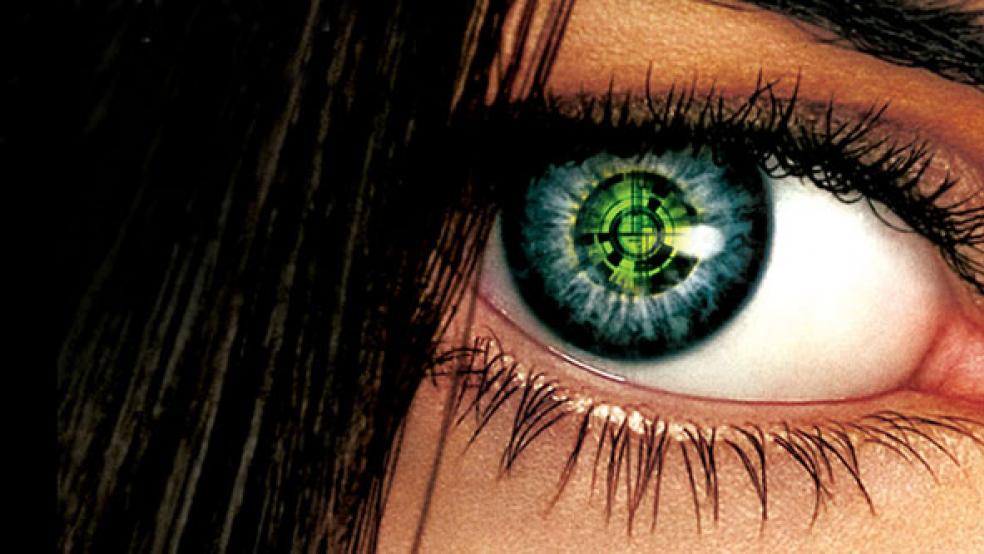What if I told you that a device exists that uses a mini-camera embedded in a pair of glasses to feed images directly into the brain of a blind person?
And what if this device could earn hundreds of millions of dollars for its inventors and investors, plus help shave off some of the $51 billion a year spent on direct and indirect costs of blindness in America?
This may seem like science fiction along the lines of the seventies TV series The Six Million Dollar Man, which centered around Steve Austin, an astronaut who lost his eye in an accident and had it replaced with a bionic one. Yet it’s actually happening. Last March, CE Mark (Europe’s equivalent of America’s FDA) approved the Argus II, a bionic eye that cannot yet zoom in on distant objects with super-human precision like Colonel Austin could but has allowed blind people to perceive objects and in a few cases to read letters written in oversized type.
The Argus, developed and now sold by Second Sight of Sylmar, California, comes after three decades of work on bionic body parts that already has produced the cochlear implant, a similar device that records sound waves from, say, a person talking or a Mozart concerto and converts them with a tiny computer into electrical signals. These are then fed into the auditory (cochlear) nerve leading from the ears into the brain. First approved by the Food and Drug Administration in the mid-1980s, cochlear implants are in use by over 100,000 people today, and bring in over $500 million in revenues, with a growth rate of 15 percent a year.
The optical implant uses a tiny video camera mounted on a pair of glasses attached wirelessly to a small computer. Images from the camera – a face or a pole on the street or even the letters on a “Do Not Walk” sign - are converted into electronic signals that are fed into implanted electrodes on the retina, which relays the information to the optic nerve and into the brain, which “sees” and understands the content of the images.
“The blind community have been waiting for this for decades,” Lyndon da Cruz, a consultant retinal surgeon at Moorfields Eye Hospital in London, told The Economist. Da Cruz has implanted seven of the devices as part of the clinical trials for the Argus II. “It’s almost unbelievable that it’s coming to market. Very few people would have expected that there could be an artificial retinal device on the market by 2011.”
Second Sight’s CEO, Robert Greenberg, says his company raised some $200 million to develop the device and to run clinical trials on about 30 people. The major hurdle was making it safe for a person to carry the implants in their eyes, and to create materials that would not corrode or degrade in the harsh environment inside the body. “We will start offering it at medical centers first,” he said, charging $115,000 for the device and the implant surgery.
Not unreasonable, since the cost of a lifetime of support and unpaid taxes for one blind person is $916,000 according to the National Federation of the Blind. Additionally, there are 93,600 blind school-age children and 1.3 million legally blind people in the U.S.
Right now, the device only works for patients who have an intact optic nerve, a small group of blind people whose condition usually came upon them as they age due to a retina-wasting disease such as retinitis pigmentosa. According to the World Health Organization, 100,000 Americans and about 1.5 people globally suffer from retinitis pigmentosa. Second Sight and others in research labs are experimenting with implanting a device into the brain.
“There is less risk putting an implant in the eye than in the brain,” said Greenberg, though developing a safe brain implant would allow many more blind people to benefit from this prosthetic. Globally about 161 million people are visually impaired, with 37 million completely blind.
Even with a limited market, the device within a few years should have sales similar to the cochlear implant, which is less complicated than the Argus II and therefore less expensive to make. Cochlear devices cost about $25,000, a price that has declined as the product has scaled--something Greenberg predicts will happen with the optic devices.
The Argus II allows only limited sight, just like the cochlear implant allowed the deaf to hear only a few sounds when it was first sold in the mid 1980s. Now patients equipped with the latest cochlear devices can carry on a phone conversation, hear someone speaking to them in a loud bar, and even listen to music.
"I'm only seeing a fraction of things but it does still help,” Eric Selby, a retired engineer in Coventry, central England, told The Huffington Post. He lost his sight nearly 20 years ago due to an inherited eye condition.
Greenberg expects optical implants to one day have an impact on the $51 billion price tag for blindness in the U.S. by restoring people’s productivity and society’s price tag for taking care the blind. Such an impact is already being seen with cochlear implants.
According to a year 2000 study published in the Journal of the American Medical Association, researchers at Johns Hopkins found that each child outfitted with a cochlear implant would not only have an improved life, but also society would save $54,000 over a lifetime after paying for the device. The benefits come mostly from less special education and increased productivity.
Second Sight is already developing Argus III, which will implant hundreds of electrodes into the retina rather than the 60 provided by the Argus II. This should help with the resolution and clarity of images, says Greenberg. Labs in universities are also experimenting with variations on the device, though so far no commercial effort has moved the process along as far as Second Sight.
Greenberg says his scientists are also working on adding color. His researchers have also experimented with zoom lenses and even infrared, just like Steve Austin in The Six Million Dollar Man. “That’s all not too hard,” he said. “The real challenge right now is the resolution.”
As for Austin-like super vision, Greenberg says that is years away. “But it’s not out of the question.”
Related Links:
New Hope as Bionic Eye that Helps the Blind See Gets Go-Ahead in Britain (Express.co.uk)
FDA Approves Telescopic Bionic Eye Implant (Tom's Guide)
The Bionic Body Shop (ieeespectrum)



